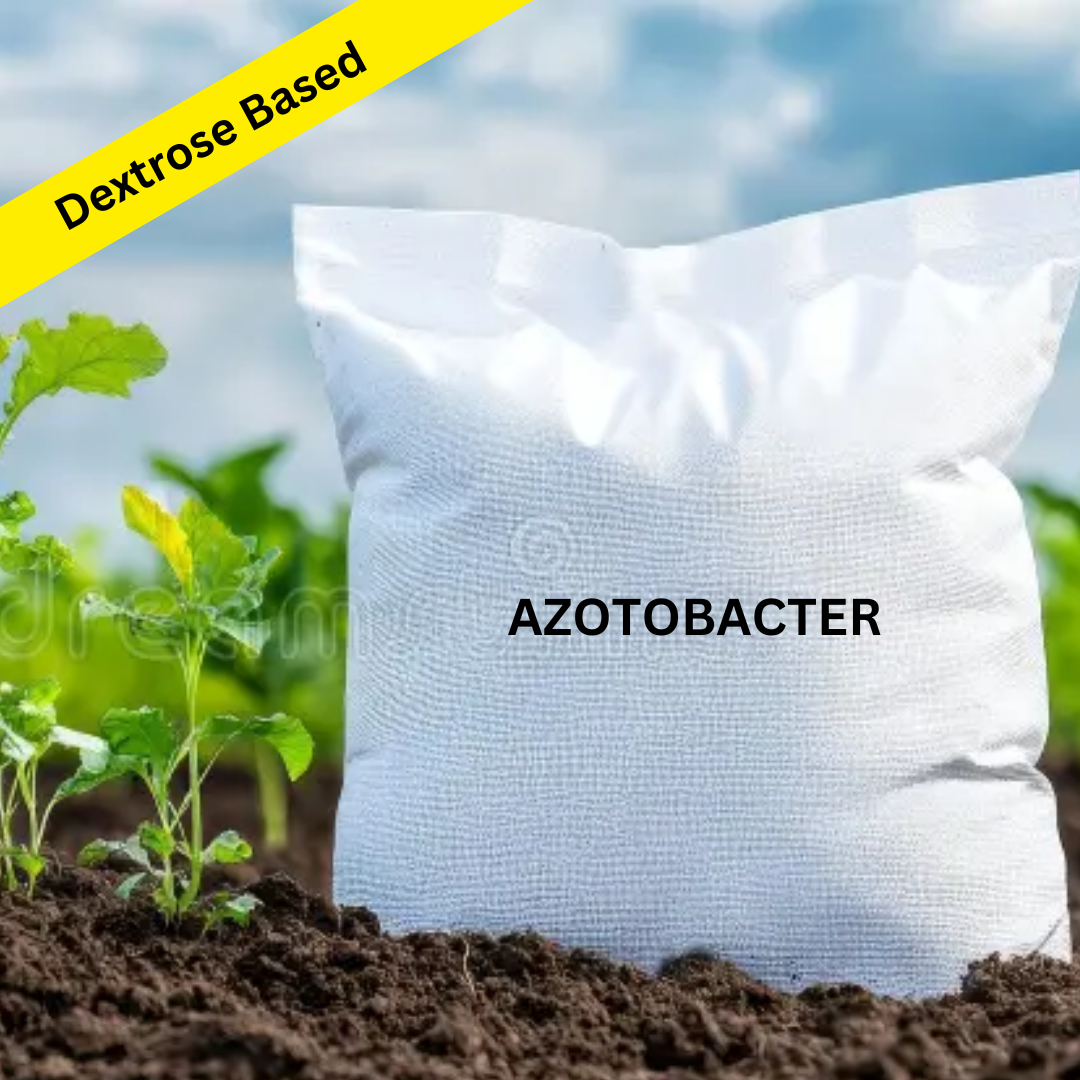Bactostore
Dextrose Based Azotobacter Powder Formulation (Water Soluble)
Dextrose Based Azotobacter Powder Formulation (Water Soluble)
Couldn't load pickup availability
Azotobacter spp. are free-living, nitrogen-fixing soil bacteria that enhance plant growth through nitrogen fixation, phosphate solubilization, and phytohormone production. Formulated at 5 × 10⁷ CFU/g on a talc carrier, they boost soil fertility and reduce synthetic fertilizer dependency.
Product Specifications
-
CFU: 5 × 10⁷ per gram (50 million viable cells/g)
-
Active Content: Live cells of Azotobacter chroococcum or A. vinelandii
-
Carrier: Dextrose powder (pH 6.5–7.5 for optimal bacterial activity)
Usage Instructions
-
Dosage: 1–2 kg/acre mixed with compost or 200 L water for soil application.
-
Timing: Apply at sowing/transplanting; reapply at tillering/flowering stages.
-
Primary Action: Fixes atmospheric nitrogen (N₂ → NH₃); solubilizes insoluble phosphates.
-
Method:
-
Soil: Mix with FYM/compost (1 kg/100 kg) and broadcast.
-
Seeds: Treat with 20 g/kg slurry (use 10% gum arabic as sticker).
-
-
Frequency: 2–3 applications per crop cycle (avoid waterlogged soils).
-
Compatibility: Compatible with Phosphate-Solubilizing Bacteria (PSB) and Rhizobium; avoid chemical fungicides.
-
Activation: Requires well-aerated, moist soils (pH 6–8); suppresses Fusarium via siderophores.
-
Safety: Non-pathogenic to plants, humans, or animals.
Suitable Crops
-
Cereals: Wheat, rice, maize (enhances tillering/grain filling)
-
Vegetables: Tomato, cabbage, potato (improves N/P uptake)
-
Legumes: Soybean, groundnut (synergizes with Rhizobium)
-
Others: Sugarcane, cotton, horticultural crops
Storage Instructions
-
Temperature: 15–25°C (critical; avoid refrigeration or >30°C).
-
Packaging: Breathable polyethylene bags (to prevent anaerobic death).
-
Shelf Life: 6 months (extend to 9 months with lignite carrier).
-
Precautions: Store in dark, low-humidity conditions; discard if odor develops.
Key Advantage
Nitrogen-Phytohormone Synergy:
Fixes 15–20 kg N/ha per season while producing IAA (indole-3-acetic acid) and gibberellins that increase root biomass by 40% and suppress Macrophomina phaseolina (charcoal rot).
Share



